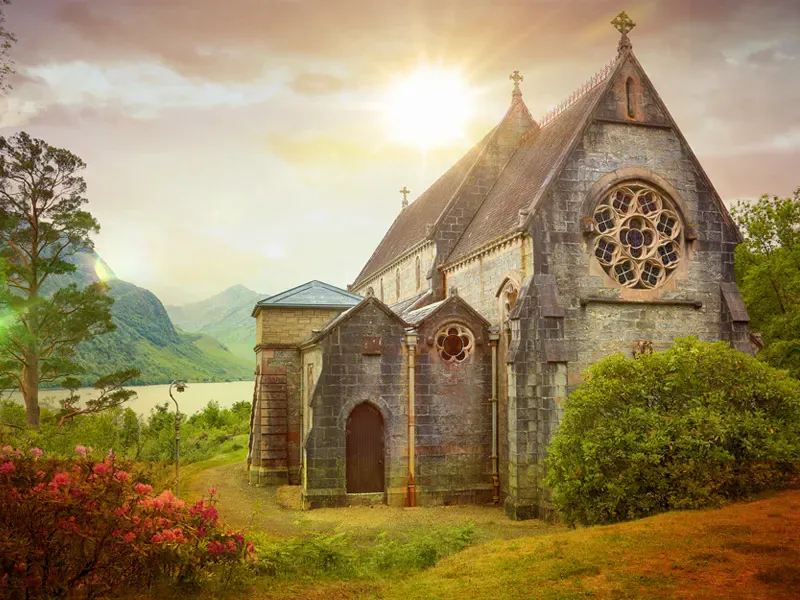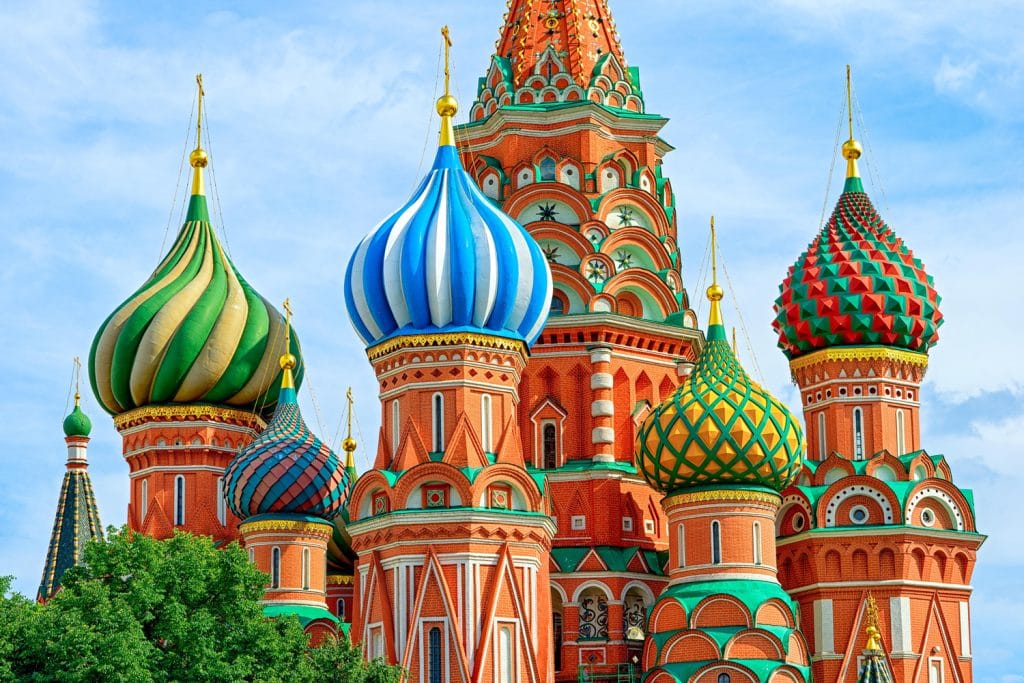Unique Churches Around the World That You Must Explore
Unique Churches Around the World: Within this collection, we’ve twelve from the strangest and many outstanding places of worship in the world. Right here are some world’s Unique Churches Around the World. These cathedrals have performed a pivotal role in developing architectural background and ideas by their magnificent exteriors and world-class interiors.
Find out more about these essential aspects of the world’s cultural heritage and take particular notice of these cathedrals. However, religious structures for example places of worship, monasteries, along other religious facilities are some of the most opulent architectural feats evidently from the planet.
The cathedrals and places of worship within this list include well-known landmarks and individuals you might not have come across before. Think about the places of worship on this list and spend some time using them.

The Green Church (Buenos Aires, Argentina)
Greater than half a century ago, the saying “green architecture” was created, indicating that humans were starting to think about the influence of the actions on creatures and also the atmosphere. Throughout the twenty-first century’s first decade, vertical gardens, eco-friendly terraces, and hanging greenhouses grew to become more and more famous megacities.
It seems that the concept of beautifying facades with real flowers has existed for quite a while in a number of different states. The Church of Jesus within the Olive Garden in Argentina is broadly considered the world’s first “green church” based on its utilization of eco-friendly practices.
This tranquil and distinctive aspect is achieved by wrapping it with ivy in the ground-up. Could it be any surprise that this is actually the location preferred by most weddings in Buenos Aires?
Paoay Church, a.k.a St. Augustine Parish (Philippines)
Within the Philippines, the Paoay Church, or Saint Augustine Church, is really a Roman Catholic church found in the town of Paoay. Built in 1710, the Church is renowned for its distinctive architecture, highlighted through the massive buttresses that line the building’s sides and rear. In 1973, the Philippine government designated it as being a nationwide Cultural Treasure, as well as in 1993, it had been incorporated around the UNESCO World Heritage List included in the Philippines? Baroque Places of worship group.
In 1686, the Augustinian Parish of St. Augustine started in the area, which makes it the earliest Augustinian Parish within the U . s . States. Father Antonio Estavillo, an Augustinian friar, started building the present Church in 1694, also it was carried out in 1710 and re-dedicated in 1896.
Former First Lady Imelda Marcos spearheaded restoration efforts following the Church endured damage within the 1865 and 1885 quakes. An earthquake baroque architecture adapted towards the country’s seismic conditions, as explained by Alicia Coseteng for that Paoay church, maybe the Philippines? most prominent illustration of this kind of architecture.
The large buttresses on the sides and the rear of your building assist to stabilize the dwelling. Because of so many devastating earthquakes throughout the nation, the adaptive re-utilization of baroque architecture against earthquakes has changed. Other types of Javanese-inspired architecture show up in the Church’s walls and facade.
Pilgrimage Church (Neviges, Germany)
A pilgrimage church and Parish in Neviges, North Rhine-Westphalia, Germany, known as Maria, Königin plusieurs Friedens (Mary, Queen of Peace). Cardinal Josef Frings of Perfume, affected by the 2nd Vatican Council, was available to the thought of a totally new church structure.
The brutalist building created by Gottfried Böhm was approved by Cardinal Schönborn. Even today, it continues to be the architect’s most legendary building, using its concrete construction and irregularly sloped roof, along with its open-air interior that evokes an open forum. Because of its concrete roof, the Church continues to be associated with numerous objects, including camping tents, crystals, rocks, along with a town. The reduced-ceilinged entrance hall is stored dark to focus on the altar, bathed see how to avoid in the Church’s many stained-glass home windows.
The 2nd Vatican Council’s concepts are reflected within the interior planning. As opposed to the elaborately decorated places of worship using the altar and congregation separation. The Gnadenkapelle, the Sacraments Kapelle, and also the Unterkirche (the low Church) underneath the primary hall are for sale to private prayer and devotion. The big home windows, like the eco-friendly Schlangenfenster (Snake Window) and also the red Rose Fenster (Rose Window), was also created by Böhm, using the rose motif as being a recurring one throughout the building.
Perfume sculptor Elmar Hillebrand designed the Mariensäule (Mary’s Column), the altar, along with a high tabernacle housing the Eucharist. The very first electronic organ was set up in the Church, however, in May of 2010, a pipe organ was dedicated.
Grundtvig’s Church, (Copenhagen, Denmark)
In 1913, Peder Vilhelm Jensen-Klint won a contest to become named Grundtvig. In 1927, the Tower Church was inaugurated the very first time after finishing the tower part in 1921-1926. When Klint’s father died in 1930, his boy Kaare completed the inside and also the nearby structures until 1940.
The Church is encircled by a residential subdivision planned by Jensen-Klint to enhance the Church (1924-36). Architect Jensen-Klint incorporated a number of architectural styles into the perception of Grundtvig’s Church. His design was affected by their building skills, materials, and ornamentation.
They combined brick Expressionism’s contemporary geometric shapes with Medieval architecture’s traditional verticals. The building’s west face, an indication of a west-work or even the outdoors of the church organ, is easily the most eye-catching aspect. The low 1 / 2 of the tower consists of plain bricks, as the top half has the look of one continuous, rippling surface. It might accommodate a congregation of just one,440 people inside the Medieval-inspired interior, that is on components in dimensions with Copenhagen Cathedral.
The tower was built using 5 million yellow bricks, a typical Danish building material. Unique Churches Around the WorldThe inside layout mimics a standard Medieval church, having a nave, two lateral aisles, along a short transept. Yellow brick and a lack of decoration, however, provide the structure a Medieval feel while yet maintaining an easy modern design.
Colonia Catholic Church (Uruguay, South America)
The Catholic Church in Uruguay and also the Society of Architects of Uruguay organized a nationwide competition to construct a little church near Colonia, Uruguay, around the River Plate shore. Lambrechts-Bertinat Architects were the title holders of the competition. They finished the undertaking prior to Christmas in the year 2006.
Isolated Parent Beach hosts a modest Catholic Church that stands around the banks from the River Plate. The stark contrast between your white-colored sand and also the crimson waters from the River Plate creates an ethereal glow that reflects within the Church’s colors. Readers are attracted towards the “floating above” hyper-paraboloid roof, locked in place by two folding-bracing walls. The interior is vibrant and airy.
This solitary sculptured chapel is supportive of the village’s traditional architecture. The mix/campanile may be the only prominent feature visible on the beach, rising over the type of trees that flank the shore. Based on legend, an Indigenous South American artist produced an XVIIth century wooden carving from the Virgin Mary, that was transported to Europe by great South American rivers. The look took its origin from this inspiration.
Because of the early 1920s, Modern Nederlander Expressionism is a standard architectural style in Uruguayan homes and public spaces. Using its reflected features and reflective abilities, the Church increases over the moat water and performs masses within the outside areas throughout the summertime.
